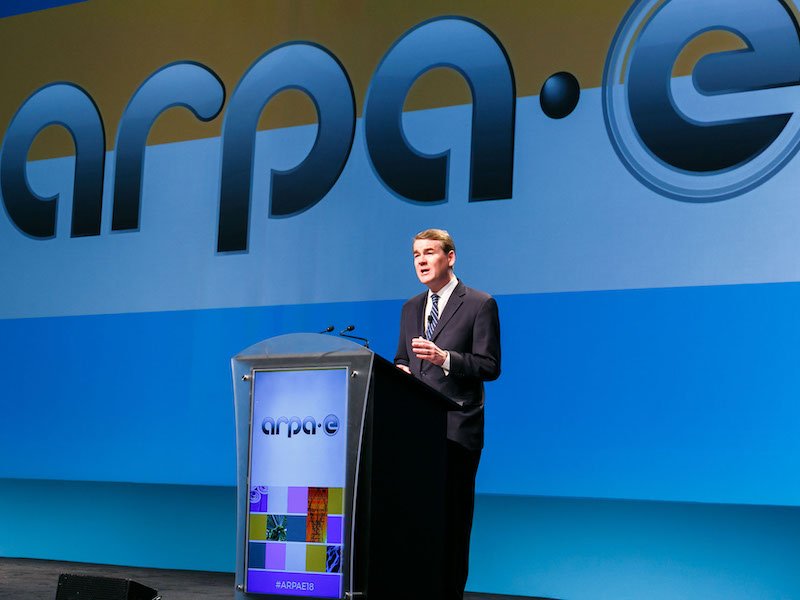Australia has developed a reasonably strong research system but a weak innovation system – and as there has not been a good diagnosis of the problem, much innovation policy does little to change this. The US energy innovation agency, ARPA-E, is a potential model for a research and innovation agency that could help to transform the Australian innovation system.

ORIGINS OF ARPA-E
The formation of the Advanced Research Projects Agency – Energy, ARPA-E, was recommended to Congress in the 2005 National Academies report Rising above the Gathering Storm, which identified measures to strengthen US competitiveness. The report recommended an agency modelled on Defense Advanced Research Projects Agency (DARPA) but focused on the development of transformational energy technologies.
ARPA-E was created by the George W. Bush administration in 2007 with a goal to “overcome the long-term and high-risk technology barriers in the development of energy technologies” and to “ensure that the United States maintains a technological lead in the development and deployment of advanced energy technologies” (emphasis mine).
Its mission is to ‘catalyse the development of early stage transformational, high-impact energy technologies that could provide dramatic benefits’.
ARPA-E has a small staff (less than 60) and a modest annual budget (about US$300m). It provides funding on a cost-share basis to universities, businesses, national labs and non-profit organisations selected through open solicitations.
DESIGN ON THE DARPA MODEL
ARPA-E’s design follows the key features of the successful DARPA model:
- Focus on potentially transformative technologies – based on focused technology development challenges (missions).
- A ‘right to left’ approach – the application goal and ‘visions’ shapes the whole research and development project.
- Empowered project managers – recruited from the research or industry sector (usually with experience of both and often also in start-ups) who serve for three to five-year terms. Project managers can request changes to project teams and technical aspects, encourage new partnerships and terminate a project that is not performing well.
- A strong internal culture that encourages the selection, active management and strong advocacy of high potential projects. Consultation, networking, and internal ‘pitch’ processes replace ‘peer-assessment’.
- A portfolio developed by each project manager that includes seed funding of promising short-term projects.
- Institutional independence that enables flexibility to work outside regular government hiring and contracting procedures.
Like DARPA, its independence in a department with many other research organisations and stakeholders means that alliance building is an essential skill as is demonstrating impacts – embeddedness with independence and accountability.
CHALLENGES IN APPLYING THE MODEL TO ENERGY
DARPA’s primary and often first customer has been the US Department of Defence. ARPA-E does not have a comparable link to procurement.
It works in a wide range of technology areas where there are well-established interests, trajectories, and regulations. It has had to develop new design elements in order to be effective in energy innovation:
- Tech to Market (T2M) team – ARPA-E’s commercialisation team works with project managers and provides support for application after ARPA-E’s funding, identifying first market niches and building connections with relevant companies and investors.
Like DARPA, ARPA-E can operate across the spectrum from research through to prototype, demonstration, and initial market creation. The T2M assessment conducts initial and ongoing techno-economic, value chain, competitor, life cycle and business model analyses. - Selecting technology opportunities in the ‘white space‘ – higher risk projects in areas where there has been little prior research but with the potential to be transformational, initiating new technology trajectories.
Project managers nevertheless aim to be ‘customer-driven’ and work to build consortia of firms to build interest in the application of new technologies. Project managers are able to initiate a new research portfolio which they manage rather than be constrained by and overall ARPA-E technology plan. - Energy innovation summits – ARPA-E organises annual summits that have attracted wide participation and have become important in building a community among those in energy technology and in identifying promising new technologies.
RELEVANCE TO AUSTRALIA
The DARPA model remains relevant to Australia – although Australia does not have the same level of ‘whole of system’ advanced technology development as in the US defence sector. While DARPA has had extraordinary successes in supporting breakthrough technologies that contributed to US leadership in IT, the ARPA-E model is of broader relevance for Australia.
Its rigorous approach to T2M and to building communities of interest can help to address innovation challenges in the fractured Australian innovation system.
Like ARPA-E, the Australian Renewable Energy Agency (ARENA) is also focused on energy technology innovation, funds projects across the spectrum from research to pre-commercial demonstration, and supports work in universities, research organisations, and industry.
ARENA, established in 2012, is funded through a $2 billion core fund for 2013-2022. Unlike ARPA-E, it does not, to the same extent as ARPA-E, have empowered project managers; but it now does have a US$200m in-house fund that can provide debt or equity for commercialisation of clean energy and similar projects.
Don Scott-Kemmis is the Innovation & Entrepreneurship Research Fellow at the US Studies Centre at the University of Sydney.
Do you know more? Contact James Riley via Email.
